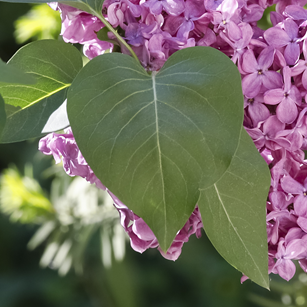Looking for a classic ornamental tree for your landscape that provides great interest, bountiful and beautiful early summer blooms and a perfumy, intoxicating scent?
Look no further than the Japanese lilac tree.
It bridges the gap between the early spring blooming trees and the summer flower show. As the last lilac to bloom, you’ll be so happy you have some sweet scents and showy cream-colored flowers to enjoy.
Whether you already have a Japanese lilac in your yard or you’re thinking about planting one, we offer some insight into popular varieties, as well as care tips to ensure your tree keeps blooming for years to come.
What Does a Japanese Lilac Tree Look Like?

The Japanese lilac is native to northern Japan and a part of the olive family. Most people prefer versatile plants, and that’s where the Japanese lilac tree delivers.
Place it near your patio where you can see it and smell the flowers. Or you can plant it in your front yard where its showy blooms can look striking from a distance. It can be an anchor in one of your landscape beds or mixed with other plants of various sizes to create a lush area.
The Japanese lilac tree size is considered medium among other trees. It can grow to a height of up to 30 feet with a 15- to 20-foot spread. It grows in a graceful, upright, attractive shape with reddish bark with white markings.
Japanese lilac tree leaves are simple and oval in shape, ranging from 3 to 6 inches long. Medium green leaves turn pale greenish-brown in autumn before they drop.
The tree blooms in clusters that can be up to 10 inches wide and 1 foot long. The creamy, white Japanese lilac tree flowers have a sweet fragrance, delivering early summer delight for approximately two weeks.
Japanese Lilac Tree Varieties

If you’re looking to add this special tree to your yard, try one of these popular Japanese lilac tree varieties:
- ‘Ivory Silk’ Japanese Tree Lilac - This is the most popular cultivar, reaching a maximum height of 25 feet. It grows about 12 to 18 inches per year.
- ‘Chantilly Lace’ - This is one of the only Japanese lilacs that offers variegated foliage where the leaves bear creamy yellow margins. Partial sun is better for this variety versus the full sun most of the other varieties prefer.
- ‘Signature’ - This variety offers more rounded and smaller flower clusters that bloom one or two weeks later than other varieties like ‘Ivory Silk,’ which extends the flowering season even longer. If you grow multiple varieties, you can benefit from more flowers and more wonderful fragrances.
- ‘Summer Snow’ - This smaller variety that only grows to 20 feet is even more tolerant of urban conditions so it’s excellent for a small city home or as a street tree.
Japanese Lilac Tree Care
Most Japanese lilac tree varieties are fairly easy to maintain with timely watering, good drainage, and proper pruning time.
Pay attention to these Japanese lilac traits to ensure a happy plant and bountiful blooms.
Japanese Lilac Tree
- Grow Zones: Japanese lilacs grow best in USDA hardiness zones 3 to 7
- Where to plant: Plant the Japanese lilac in well-drained soil.
- Height/spread: This ornamental tree will grow 20- to 30-feet tall with a 15- to 20-foot spread.
- Sunlight: The Japanese lilac tree prefers full sun, especially if you want it to offer the best blooms.
- Flowering dates: This tree grabs attention in early June after most spring flowering trees have finished blooming for the year. Blooms last approximately two weeks.
- Best time to prune: To avoid removing spring flowers, prune Japanese lilacs after the tree is done blooming. This will encourage the tree to focus energy on buds for next year’s blooms. Only remove dead, diseased, or damaged branches. Removing small branches from the center of the tree can open up the interior to more light and increased air circulation, helping to prevent fungal diseases.
- Deer resistance: Japanese lilac trees are seldom severely damaged by deer.
Potential Threats
As the most trouble-free lilac, the Japanese lilac tree is a great choice in urban landscapes, in group plantings, or even as special specimens.
Japanese lilac trees transplant easily and adapt to compact or dry soils. They can tolerate some drought, but remember to keep the ground evenly moist and make sure the soil drains well. For the best blooms, you’ll love this tree best if you plant it in full sun.
While this tree has good resistance to powdery mildew, scale, and borers, it can be susceptible to bacterial blight and leaf spots. These Japanese lilac tree problems cause blackened buds and branches and can develop in wet conditions, especially following injuries to the plant in fall or winter.





